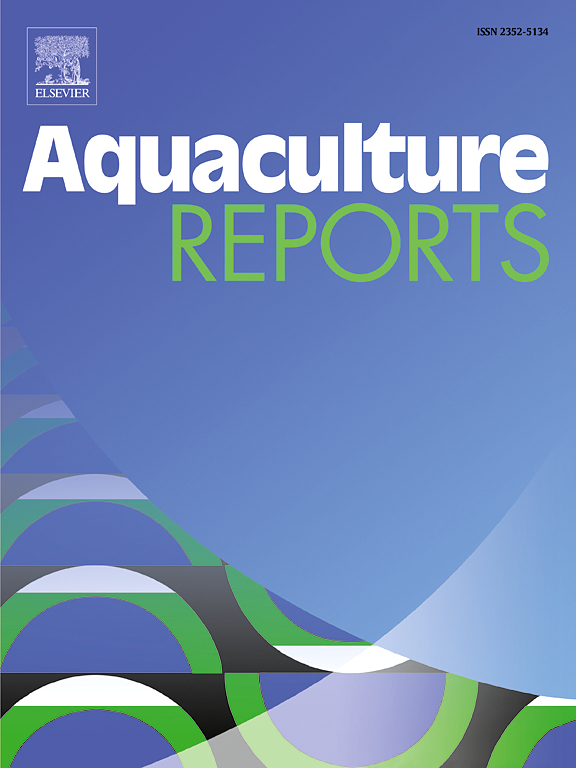Global changes in gene expression of mRNA and miRNA in liver tissues of Micropterus salmoides after infection with Aeromonas hydrophila
IF 3.2
2区 农林科学
Q1 FISHERIES
引用次数: 0
Abstract
Aeromonas hydrophila is a common pathogenic bacterium in cultivated Largemouth bass (Micropterus salmoides), but its pathogenicity to Largemouth bass and the molecular mechanism of host anti-A. hydrophila infection remains uncertain. In this study, Largemouth bass were infected with A. hydrophila to determine the median lethal dose (LD50), histopathology and changes in gene expression. The results showed that the LD50 was 2.8 × 106 CFU/mL. The liver tissue of the diseased fish demonstrated enlarged parenchymal cells and vacuolated hepatocytes. Subsequently, liver tissues from healthy fish and those from infected with A. hydrophila were sampled separately for RNA sequencing. The results showed that a total of 2807 differentially expressed mRNAs (DE-mRNAs) and 42 differentially expressed miRNAs (DE-miRNAs) were obtained. Among them, 20 immune-related DE-mRNAs (Raf1, Gcsfl, Traf6, etc.) and 7 DE-miRNAs (miR-2188-x, miR-137-y, miR-144-y, etc.) were identified. Some immune-related pathways such as “AMPK signaling pathway” and “PPAR signaling pathway” were significant enrichment. A RT-qPCR of the randomly selected seven DE-mRNAs and seven DE-miRNAs confirmed the reliability of the RNA-seq. Additionally, integrative analysis of miRNA and mRNA identified a regulatory network consisting of 7 miRNAs and 18 mRNAs which were strong candidates for immune response. Furthermore, the dual-luciferase reporter assay confirmed that miR-144-y and miR-2188-x negatively regulate the expression of Gcsfl (granulocyte colony-stimulating factor-like), while miR-2188-x and miR-137-y negatively regulate the expression of Traf6 (TNF receptor-associated factor 6), which plays central role in immune response in Largemouth bass after infection with A. hydrophila. Overall, our findings will provide new insights into the fundamental patterns of molecular responses induced by A. hydrophila in Largemouth bass.
求助全文
约1分钟内获得全文
求助全文
来源期刊

Aquaculture Reports
Agricultural and Biological Sciences-Animal Science and Zoology
CiteScore
5.90
自引率
8.10%
发文量
469
审稿时长
77 days
期刊介绍:
Aquaculture Reports will publish original research papers and reviews documenting outstanding science with a regional context and focus, answering the need for high quality information on novel species, systems and regions in emerging areas of aquaculture research and development, such as integrated multi-trophic aquaculture, urban aquaculture, ornamental, unfed aquaculture, offshore aquaculture and others. Papers having industry research as priority and encompassing product development research or current industry practice are encouraged.
 求助内容:
求助内容: 应助结果提醒方式:
应助结果提醒方式:


